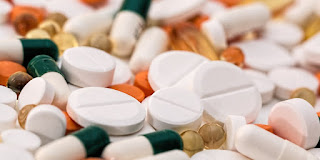Phases of Part D coverage
The cost of your Medicare Part D-covered drugs may change throughout the year. If you notice that prices have changed, it may be because you are in a different phase of Part D coverage.
There are four different phases—or periods—of Part D coverage:
Deductible period: Until you meet your Part D deductible, you will pay the full negotiated price for your covered prescription drugs. Once you have met the deductible, the plan will begin to cover the cost of your drugs. While deductibles can vary from plan to plan, no plan’s deductible can be higher than $415 in 2019, and some plans have no deductible.
Initial coverage period: After you meet your deductible, your plan will help pay for your covered prescription drugs. Your plan will pay some of the cost, and you will pay a copayment or coinsurance. How long you stay in the initial coverage period depends on your drug costs and your plan’s benefit structure. For most plans in 2019, the initial coverage period ends after you have accumulated $3,820 in total drug costs.
Note: Total drug costs include the amount you and your plan have paid for your covered drugs.
Coverage gap: After your total drug costs reach a certain amount ($3,820 for most plans), you enter the coverage gap, also known as the donut hole. During this period, your plan does not pay for your drugs. However, as a result of health reform there are federally funded discounts that help you pay for your drugs during the donut hole. In 2019, there is a 75% discount for most brand-name drugs, paid for by the manufacturer and the federal government. This means you pay the remaining 25% of the cost for brand-name drugs. Similarly, the government provides a 63% discount for generic drugs. This means you pay the remaining 37% of the cost for generics.
Catastrophic coverage: In all Part D plans, after you have paid $5,100 in 2019 in out-of-pocket costs for covered drugs (this amount is just the amount you have paid, not the total drug costs that you and your plan have paid), you reach catastrophic coverage. During this period, you pay significantly lower copays or coinsurance for your covered drugs for the remainder of the year. The out-of-pocket costs that help you reach catastrophic coverage include:
What you paid during the initial coverage period?
Almost the full cost of brand-name drugs (including the manufacturer’s discount) purchased during the coverage gap.
Amounts paid by others, including family members, most charities, and other persons on your behalf. Amounts paid by State Pharmaceutical Assistance Programs (SPAPs), AIDS Drug Assistance Programs, and the Indian Health Service.
Costs that do not help you reach catastrophic coverage include monthly premiums, the cost of non-covered drugs, the cost of covered drugs from pharmacies outside your plan’s network, and the 63% generic discount. During catastrophic coverage, you will pay 5% of the cost for each of your drugs, or $3.40 for generics and $8.50 for brand-name drugs (whichever is greater).
Your Part D plan should keep track of how much money you have spent out of pocket for covered drugs and your progression through coverage periods—and this information should appear in your monthly statements.
Check the chip guidelines carefully before exploring the CHIP programs, this will help you to find best plans for your child.




Different factors of the health Insurance is important to understand carefully before choosing any plan.
ReplyDelete